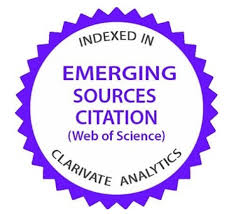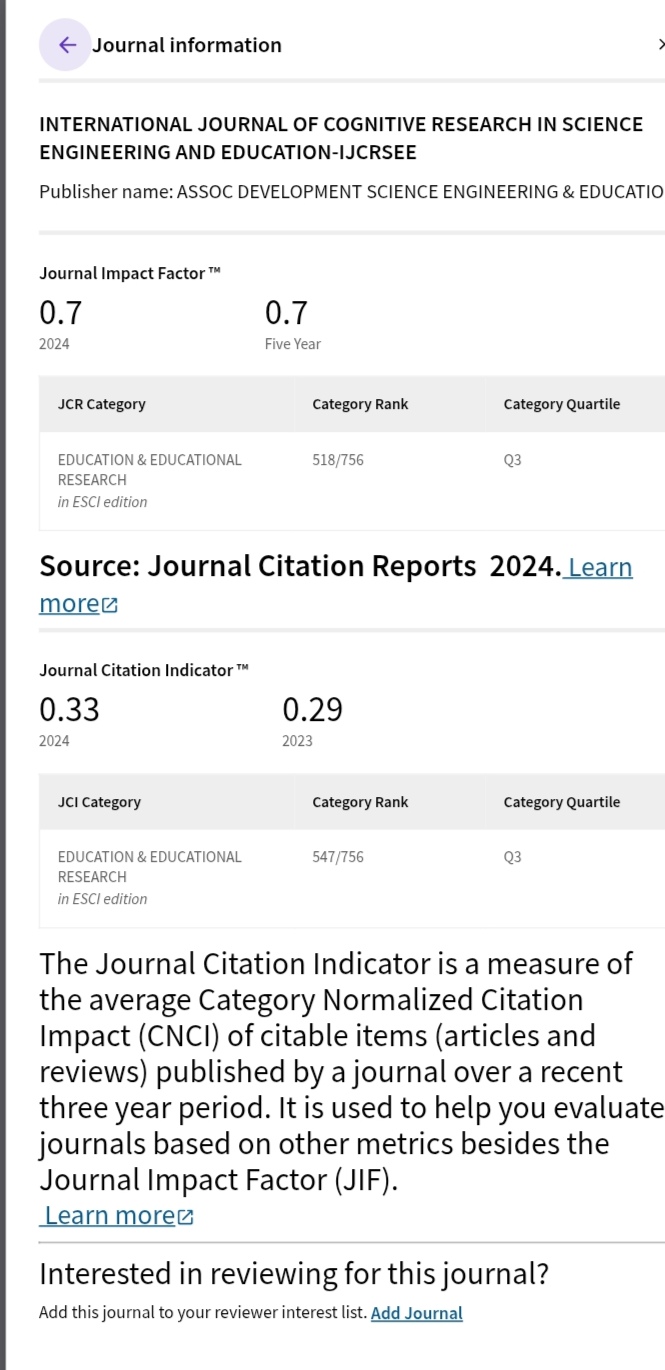VISUAL PERCEPTION SPECIFICS OF CHILDREN WITH ASD AS A DETERMINANT FOR EDUCATIONAL ENVIRONMENT OUTLINETIMES
DOI:
https://doi.org/10.5937/IJCRSEE1701075BKeywords:
autism spectrum disorder, visual perception, image, learning and teaching materials, learning environment, designAbstract
The idea of inclusive education raises the question of security of children with autism spectrum disorders (ASD). It is the imperative of the time to create teaching materials that promote the effective implementation of educational curriculum. However, we have to stress the fact that most of the evaluable nowadays teaching materials have been created spontaneously, without any reliable criteria. Our primary hypothesis is that children with ASD have specific features of visual perception that do not depend on the state of their intelligence, which is confirmed by empirical data obtained by the authors. Our secondary hypothesis, specified in the process of research, stipulates that children with ASD will differently perceive different graphic images executed in different styles. These findings are further confirmed by empirical data collected by the authors in the study of perception and understanding of different graphic images by children with ASD and mental retardation. On the basis of theoretical and empirical data we specified the criteria for graphic design products which play a pivotal role in the formation of school educational environment. In this respect we focus on the criteria for design materials (including design criteria provisions, formulated by Norman, which he addressed to practicing designers).
Downloads
References
Allakhverdov, V. M. (2000). Consciousness as Paradox. Eksperimental’naia psikhologika, 1.
Anderson, D. R. (2002). Cognitive psychology. SPb.: Piter.
Anokhin, P. K. (1971). Philosophical aspects of the theory of a functional system. Soviet Studies in Philosophy, 10(3), 269-276. http://www.tandfonline.com/doi/abs/10.2753/RSP1061-19671003269
Bernshteyn, S.B. (2000). On the problems of dialectology and linguogeography. “Indrik”.
Bystrova, T.Y., Tokarskaya, L.V. (2016a). Graphic design for people with ASD. Akademicheskiy vestnik UralNII Proekt RAASSN, 2 (29), 95-99. Retrived from: https://elibrary.ru/download/elibrary_26279712_93314492.pdf
Bystrova, T.Y., Tokarskaya, L.V. (2016b). Designing an educational environment for children with autism spectrum disorders: the formulation of the question. Seriya 1. Problemy obrazovaniya, nauki i kul’tury, 1(47), 168-175. Retrived from: http://elar.urfu.ru/bitstream/10995/38070/1/iurp-2016-147-22.pdf
Chermenskaya, G., (2014). How do people with autism see us. Psihologiya: lichnost’, 3(3). Retrived from: http://www.psychologies.ru/self-knowledge/individuality/kakimi-nas-vidyat-autistyi2/
Chto v dushe autista, beseda s Iris Yohanson [What is in the soul of an autist, a conversation with Iris Johanson]. (2015). Retrived from: https://goo.gl/8DAPYO
Dawson, G., Meltzoff, A., Osterling, J., Rinaldi, J., Brown, E. (1998). Children with autism fail to orient to naturally occurring social stimuli, Journal of Autism and Developmental Disorders, 28(6), 479–485. Retrived from http://ilabs.washington.edu/meltzoff/pdf/98Dawson_Meltzoff_etal_JADD.pdf
Dawson, G., Toth, K., Abbott, R. (2004). Early social attention impairments in autism: social orienting, joint attention and attention to distress. Developmental Psychology, 40(2), 271–283. doi:10.1037/0012-1649.40.2.271
Eti izobrazheniya pokazyvayut, kak autisty vidyat mir [These images show how autistics see the world]. Retrieved from https://econet.ua/articles/80959-eti-izobrazheniya-pokazyvayut-kak-autisty-vidyat-mir
Galperin, P. Y. (1999). Introduction to Psychology: Textbook for High Schools. (in Russian). Retrieved from http://pedlib.ru/Books/3/0297/3_0297-1.shtml
Gerchuk, Y.A. (1998). What is an ornament? The structure and meaning of the ornamental image. M: Galart.
Grandin, T., Skariano, M. (1999). Opening hope doors. My experience of overcoming autism. M: Tsentr lechebnoy pedagogiki.
Itten, I. (2011). The Art of Color. Izdatel’ D. Aronov.
Ivanov, E., Dem’yanchuk, L., Dem’yanchuk, R. (2004). Children’s Autism: Diagnosis and Correction. “Didaktika Plyus”.
Kant, I. (2015). The Critique of Pure Reason. Eksmo, Moscow.
Kelli, D. (2000). The Theory of personality (Theory of personal constructs). SPb.: Rech’.
Kim, Y. S., Leventhal, B. L., Koh, Y. J., Fombonne, E., Laska, E., Lim, E. C., ... & Song, D. H. (2011). Prevalence of autism spectrum disorders in a total population sample. American Journal of Psychiatry, 168(9), 904-912. Retrieved from https://doi.org/10.1176/appi.ajp.2011.10101532
Kostin, I. (1997). Organization of perceptual information in adolescents and young men with autism. Defektologiya, 1.
Lebedinskaya, K., Nikol’skaya, O. (1997). Diagnostic card. The study of the child of the first two years of life with the assumption that he had early childhood autism. SPb.: Mezhdunarodnyy universitet sem’i i rebenka im. R. Vallenberga, 116-123.
Lebedinskaya, K. (1997). Early Childhood Autism. SPb.: Mezhdunarodnyy universitet sem’i i rebenka im R. Vallenberga, 77–91.
Lebedinskiy, V., Nikol’skaya, O., Baenskaya, E., Libling, M. (1990). Emotional disorders in childhood and their correction. Izd-vo Mosk. un-ta.
Leont’ev, A. N. (1959). Problems of development of the psyche. Izdatel’stvo Akademii pedagogicheskih nauk RSFSR.
Lindsey, P., Norman, D. (1974). Information processing in humans (Introduction to psychology). “MIR”.
Luriya, A .R. (2011). A little book about big memory. Izdatel’stvo MGU.
Miller, G., Johnson-Laird, P. (1976). Language and perception. Cambridge, Mass.: Harvard University Press.
Naysser, U. (1981). Cognition and Reality. Progress.
Nikol’skaya, O., Baenskaya, E., Libling, M. (2010). Autistic child: ways to help. Terevinf.
Norman, D., Norman, D. A. (1988). The Design of Everyday Things. New York: Basic Books. Strelka Press.
Norman, D. (2002). Emotion & design: attractive things work better. interactions, 9(4), 36-42. http://dl.acm.org/citation.cfm?id=543435
Norman, D. A. (2006). Emotionally centered design. interactions, 13(3), 53. https://interactions.acm.org/archive/view/may-june-2006/emotionally-centered-design1
Norman, D. (2013).Things’ design of the future. Strelka Press.
Piters, T. (1999). Autism: from theoretical understanding to pedagogical influence. Institut spetsial’noy pedagogiki i psihologii.
Raushenbah, B. (2002). The geometry of the picture and visual perception. SPb.: Azbuka-klassika.
Rubinshteyn, S. (2002). The Fundamentals of General Psychology. SPb.
Siemens, G. (2008). About: Description of connectivism. Connectivism: A learning theory for today’s learner, website.
Sigman, M., Mundy, P., Sherman, T., & Ungerer, J. (1986). Social interactions of autistic, mentally retarded and normal children and their caregivers. Journal of Child Psychology and Psychiatry, 27(5), 647-656. doi:10.1111/j.1469-7610.1986.tb00189.x
Solso, R. (2006). Cognitive psychology. SPb.: Piter.
The animals vacation (1964). Illustrated by Shel and Jan Haber, NY.
Tulmin, S. (1984). Human understanding. Progress.
In the fairy-tale kingdom. The illustrator Gennadiy Konstantinovich Spirin. https://vdohnovenie2.ru/v-skazochnom-carstve-illyustrator-gennadij-spirin/
Viktor Mikhailovich Vasnetsov - biography and pictures. https://muzei-mira.com/biografia_hudojnikov/765-viktor-mihaylovich-vasnecov-biografiya.html
Vygotskiy, L.S. (1996). Teachers’ training psycology. Pedagogika.
Zabrodin, Y., Lebedev, A. (1977). Psychophysiology and psychophysics, Nauka.
Zinchenko, V. (1997). Image and Activity. Voronezh: NPO “MODEK”.
Published
How to Cite
Issue
Section
License
Copyright (c) 2017

This work is licensed under a Creative Commons Attribution-NonCommercial-NoDerivatives 4.0 International License.











